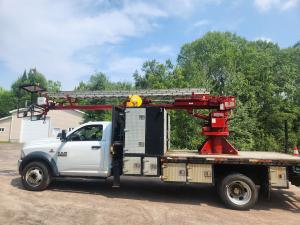Breaking barriers: New 3D Braille signage aims to redefine accessibility in kitchens

An innovative 3D-printed Braille signage solution, designed for individuals with vision loss, will improve accessibility within a kitchen setting while also providing a long-term use case. Confederation College’s Applied Research and Innovation team developed this project in partnership with the Canadian National Institute for the Blind (CNIB) and Vision Loss Rehabilitation Canada (VLRC).
CNIB’s practice kitchen in Thunder Bay, Ont., where individuals with vision loss can learn or relearn to navigate cooking environments, previously relied on paper Braille signage. This was not durable enough for long-term use, and improved signage was needed. The Confederation College’s Advanced Manufacturing team, led by Research Supervisor Greg Gagnon, began its efforts to provide an effective and lasting solution.
According to the university’s website, the team’s main challenge was developing “tactile and readable” signage. Sings made with traditional 3D printing methods are unsuitable for Braille users because they produce sharp edges. So, the team used a dual-process 3D printing method that created smooth, raised, large print text alongside Braille.
“The development of this signage required us to rethink conventional techniques,” said research supervisor Gagnon. “Using two different processes, we were able to ensure that the signs are cost-effective and optimized for accessibility.”
The signage has 3D-printed squares that combine raised text and Braille, designed to be readable by touch while remaining easy to install and maintain. They selected low-cost materials and methods, ensuring affordability. CNIB verified the effectiveness of the signage, with a Braille reader assessing the prototypes before installation.
“Accessibility means removing obstacles, and initiatives like this have a significant impact,” said Tanis Boardman, Ontario Programs and Community Engagement manager, CNIB.



